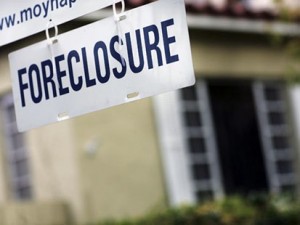After a brief lull in activity, serious mortgage delinquencies picked up in the second half of 2011, according to new report from Foreclosure-Response.org, and along the way, they highlighted some of the most interesting nuances of the judicial handeling of foreclosures.
Though serious delinquencies did, after a six-quarter streak of declining rates, hit a low in June 2011 with a 9.2 percent share of loans, by December of that year they had climbed back up to 9.7 percent, and the share of homes in foreclosure also increased in that time span to 5.9 percent, according to the report, which analyzed data from 366 metro areas.
As has been the case since the foreclosure crisis started, there was a distinct difference in the data between judicial states and non-judicial states. In December 2011, the foreclosure rate for judicial states stood at 7.2 percent, but for nonjudicial states, it was a much lower 4.7 percent. Also, the report notes, the foreclosure rate in judicial states has increased every quarter since March 2009, when Foreclosure Response first began tracking the data. Non-judicial states, by comparison, have boasted flat rates the last five quarters.
What the report differentiated, though, was the cause for that discrepancy. Judicial states are often criticized for following an inept process for dealing with the foreclosure backlog, but Maya Brennan, a senior research associate with the Center for Housing Policy, said it’s more an issue of resources, or lack thereof, than anything else.
“We don’t mean to suggest that states with a judicial foreclosure process should end that practice,” Brennan said. “Review by the courts offers safeguards for borrowers and opens alternative ways to resolve foreclosure, like mediation. Devoting more judicial resources to processing the high volume of foreclosures would help ensure due process without burdening homeowners, lenders, and neighborhoods with unreasonably long foreclosure timelines.”
One state that has faced this problem, the report noted, is Florida, where the foreclosure rate has grown by more than five percentage points from March 2009 to December 2011 (Miami also has the highest seriously delinquent rate at 23.6 percent). The average foreclosure in the state takes more than 800 days to complete, such is the lack of judicial resources, and the state has even begun re-hiring retired judges to help manage the backlog.
Rob Pitingolo, a research assistant at the Urban Institute, said Florida’s backlog still does not justify a switch to a non-judicial system.
“The foreclosure backlog appears to have been far too great for the courts in judicial review states to process without additional staffing,” Pitingolo said of Florida. “On the other hand, in states without a judicial review process, foreclosures move through more quickly but borrowers may more easily fall victim to fraud and other abuses. To protect homeowners and return stability to the market, all states need to find a way to process foreclosures that balances expediency with fairness.”
The report also noted that while nearly half of the nation’s 100 largest metro areas are located in judicial states, and the metro areas of New York, Florida and Ohio have some of the longest average foreclosure timelines, those details do not necessarily suggest a lower rate of foreclosures and serious delinquencies in non-judicial states. Between Memphis, Las Vegas and the metropolitan areas of California’s Central Valley – which are all non-judicial areas – there are still plenty of serious delinquencies and foreclosures present.

